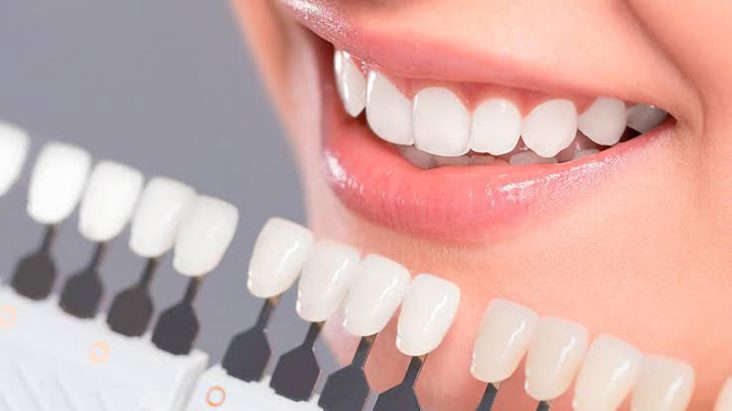Everyone is after the perfect smile, with a number of treatments on the market that can help you to achieve that, from whitening kits to professional procedures. However, one of the most popular methods to achieve gorgeous pearly whites is through the use of veneers.
What are veneers?
Veneers are thin layers of porcelain that are specifically shaped to fit over the front surface of your teeth in order to provide a perfect white colouring. Think of them like false nails but for your teeth. There are a number of reasons why people invest in veneers. Some do it for the colour alone, as they look to trade in their faded or yellowing natural tone for a shiny veneer white. However, veneers can also be used to cover chips, close small gaps between teeth, and even reposition teeth in certain situations. They can also be specifically shaped for your mouth in order to provide symmetrical teeth, keeping a consistent height and shape for your dream smile.
How are veneers made?
Veneers are either made from think layers of porcelain or from resin composite materials. This is because they are far less prone to staining than natural teeth, leaving you with a pearly white colour for longer. The porcelain or resin material is then shaped to your teeth using a mould taken from your mouth.
How long do veneers take to make?
It usually takes between two and four weeks for the dentist to be given your veneers from the laboratory after measurements have been sent off. Therefore, the process from start to finish is not a lengthy one.
Are veneers done in stages?

Veneers always take at least two visits to fully fit. On your first visit, your dental professional will examine your teeth, prepare them, and match the correct colour and shade for your mouth. The preparation often includes the removal of an outer enamel layer in order to make space for the veneers. Sometimes, a local anaesthetic may be used for the enamel removal, but this is often not necessary.
The preparation process may make your teeth feel less smooth between visit one and two, but this process is so minimal that temporary veneers are not needed. During your second visit, the dentist will show you an example of a veneer over the top of one of your teeth to ensure you are happy with the colour, shape, and overall look. They will then fit the veneers during this second visit. They do this by using bonding agents (special adhesive) in order to stick the porcelain straight on the front of the teeth.
Often, about a week after the veneers are fitted, your dentist will have another appointment with you to check in on things. At this stage, they will polish them and ensure they is fitting correctly, before asking you if you are happy with the veneers. However, it is always wise to give your mouth time to get used to the veneers, and only minor adjustments can be made after fitting anyway.
How long do veneers last?
This is definitely something that your dentist will tell you during the process, however, the vast majority of veneers should last you many years. Having said that, just like normal teeth, veneers can chip and break, so you do have to be careful. Small chips can be repaired by a dentist, but more serious damage may result in a new veneer fitting.
So do veneers ruin your teeth?
Despite what some people might think, porcelain veneers do not harm a person’s natural teeth. The whole point of a veneer is to make your teeth appear more beautiful without harming their natural health. Of course, you must still keep a good standard or oral hygiene as you would with a normal set of teeth. A pearly white exterior is no reason to slack on brushing or flossing.
Can I brush in the same way?
It is recommended that you still keep up your oral hygiene routine after having veneers fitted. Brush and floss your teeth in the same way; the veneers need to be cleaned too.
Does the process hurt?
A numbing agent is often used in the veneer process itself, so a patient should feel nothing more than a numbness in their mouth. When just two to four veneers are bonded to a patient’s teeth, there should also be little discomfort once the numbing wears off. If you are getting more than eight veneers fitted, then you will likely experience some aching and soreness in your gums and jaw. However, this can often be combated with some over-the-counter medicine.
What can I eat after having veneers fitted?
The situation is different depending on the patient and their personal bite. However, for the first few days after your veneers are fitted, it is recommended that you stick to softer foods to be on the safe side and to avoid pain. However, after you have had the veneers fitted for a few weeks, you should be able to go back to your normal diet. In these first few weeks, people often advise that you avoid things such as ice-cream, apples, boiled sweets, popcorn, ice, and any extremely hard foods.
Do I need to change my habits?
The vast majority of us have a bad habit when it comes to our mouths. Whether this is biting your nails, chewing on straws and forks, using your teeth to open things, chewing on clothing, biting your mouth, or anything else, you should make a big effort to stop. All of the above can put stress on your veneers, something that is best avoided if you want them to last for the long-haul.
What happens if a veneer falls off?
This is extremely rare, but also should not cause panic if it does occur. All you have to do is save the veneer and contact your dental professional. They will arrange for an appointment to re-attach the veneer at the soonest convenience. The only thing you may find is that the exposed tooth is a little more sensitive than normal without the veneer attached.
Where should I go for porcelain veneers in Melbourne?
Abbotsford Dental has been providing top quality dental care for the people of Melbourne for years now. Their dedicated staff, led by Dr Frank Nikakhtar are experienced in the art of veneers and would be happy to answer any and all questions you may have.
 201 Nicholson Street Abbotsford VIC 3067
201 Nicholson Street Abbotsford VIC 3067
